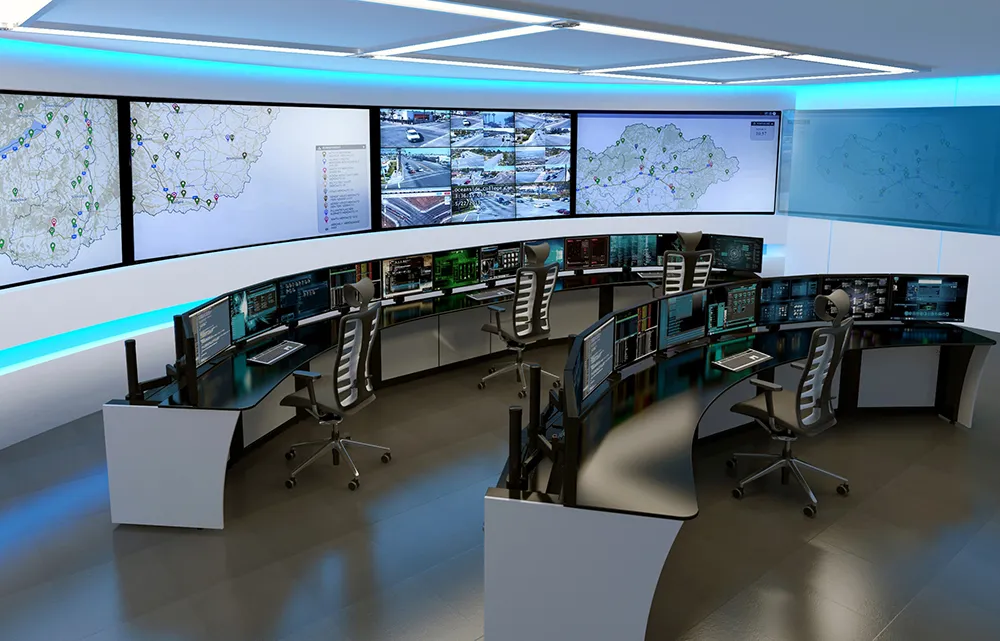The results of the US$33.8 million (€26 million) European Bus System of the Future (EBSF) project have been announced following four years of intensive research and high-profile work. The project, which started in the midst of the financial crisis in 2008 and achieved several key results, aimed to develop a new generation of urban bus systems adapted to the needs of European cities as well as improving the perception of bus transport. By defining the bus system as a whole, rather than looking just at the v
October 16, 2012
Read time: 3 mins
The results of the US$33.8 million (€26 million) 809 European Bus System of the Future (EBSF) project have been announced following four years of intensive research and high-profile work.
The project, which started in the midst of the financial crisis in 2008 and achieved several key results, aimed to develop a new generation of urban bus systems adapted to the needs of European cities as well as improving the perception of bus transport. By defining the bus system as a whole, rather than looking just at the vehicle, EBSF set out to achieve major advances in the design of not only vehicles, but also infrastructure and operations.
EBSF reports that improvements in IT systems, vehicle design, driver cabins and bus stations put to the test in real operations in eight European cities - Bremerhaven, Brunoy, Budapest, Gothenburg, Madrid, Paris, Rome and Rouen - achieved key results such as:
IT standard architecture: sharing data through open architecture makes buses more connected, improving efficiency and reducing costs. Creates the possibility for operators across Europe to access the same information with large cost savings
Capacity and modularity: new modular internal and external bus layout increasing passenger capacity and adapted to demand
Passenger flow: breakthrough design speeding up boarding and reducing dwell time
Dynamic passenger information: real-time multimodal information to help passengers make better travel decisions
Accessibility for all users: seamless interaction between the bus and the platform
Driver comfort: ergonomically optimised and adjustable driver workspace for improved driver comfort
Remote diagnostics: new tele-diagnostic system to optimise preventive and predictive maintenance
Interoperable Automatic Vehicle Monitoring Systems (AVMS): coordinating and managing services across all transport modes, operators and emergency services from an integrated public transport management centre
Energy management: strategies for the management of on-board energy to efficiently reduce consumptions of auxiliaries, also through the use of special material
EBSF roadmap for ERTRAC (European Road Transport Research Advisory Council): recommendations for operators and authorities to implement the innovations and priorities for future bus system research developed by more than 100 stakeholders
“The sheer scale and ambition of EBSF make it unique in the bus sector and even the whole public transport domain and has been a great success on many different levels,” explained UITP secretary general, Alain Flausch. “Bringing together so many manufacturers and industry partners led to the creation of a variety of innovative solutions and an overall strengthening of the competitive position of European bus manufacturers”.
“The EBSF project has provided a real boost for European research and development in urban bus networks,” added EBSF project director, Umberto Guida. “The project results enable the setting up of a framework for harmonisation and standardisation of the EBSF solutions. Indeed, the results are so promising that we are confident that a sound foundation has been laid to take bus systems forward, enabling them to regain a firm presence in our urban environments”.
The Intelligent, Innovative, Integrated Bus System project (3iBS), led by UITP, is to continue the work of EBSF, working on increased performance, accessibility and efficiency of urban bus systems. By capitalising on the results of EBSF, supplemented by input from other successful experiences, 3iBS is committed to stimulate research, exploit bus system innovations, support deployment and implementation of key solutions, and promote exchanges of knowledge about bus systems on an international scale.
The project, which started in the midst of the financial crisis in 2008 and achieved several key results, aimed to develop a new generation of urban bus systems adapted to the needs of European cities as well as improving the perception of bus transport. By defining the bus system as a whole, rather than looking just at the vehicle, EBSF set out to achieve major advances in the design of not only vehicles, but also infrastructure and operations.
EBSF reports that improvements in IT systems, vehicle design, driver cabins and bus stations put to the test in real operations in eight European cities - Bremerhaven, Brunoy, Budapest, Gothenburg, Madrid, Paris, Rome and Rouen - achieved key results such as:
IT standard architecture: sharing data through open architecture makes buses more connected, improving efficiency and reducing costs. Creates the possibility for operators across Europe to access the same information with large cost savings
Capacity and modularity: new modular internal and external bus layout increasing passenger capacity and adapted to demand
Passenger flow: breakthrough design speeding up boarding and reducing dwell time
Dynamic passenger information: real-time multimodal information to help passengers make better travel decisions
Accessibility for all users: seamless interaction between the bus and the platform
Driver comfort: ergonomically optimised and adjustable driver workspace for improved driver comfort
Remote diagnostics: new tele-diagnostic system to optimise preventive and predictive maintenance
Interoperable Automatic Vehicle Monitoring Systems (AVMS): coordinating and managing services across all transport modes, operators and emergency services from an integrated public transport management centre
Energy management: strategies for the management of on-board energy to efficiently reduce consumptions of auxiliaries, also through the use of special material
EBSF roadmap for ERTRAC (European Road Transport Research Advisory Council): recommendations for operators and authorities to implement the innovations and priorities for future bus system research developed by more than 100 stakeholders
“The sheer scale and ambition of EBSF make it unique in the bus sector and even the whole public transport domain and has been a great success on many different levels,” explained UITP secretary general, Alain Flausch. “Bringing together so many manufacturers and industry partners led to the creation of a variety of innovative solutions and an overall strengthening of the competitive position of European bus manufacturers”.
“The EBSF project has provided a real boost for European research and development in urban bus networks,” added EBSF project director, Umberto Guida. “The project results enable the setting up of a framework for harmonisation and standardisation of the EBSF solutions. Indeed, the results are so promising that we are confident that a sound foundation has been laid to take bus systems forward, enabling them to regain a firm presence in our urban environments”.
The Intelligent, Innovative, Integrated Bus System project (3iBS), led by UITP, is to continue the work of EBSF, working on increased performance, accessibility and efficiency of urban bus systems. By capitalising on the results of EBSF, supplemented by input from other successful experiences, 3iBS is committed to stimulate research, exploit bus system innovations, support deployment and implementation of key solutions, and promote exchanges of knowledge about bus systems on an international scale.









